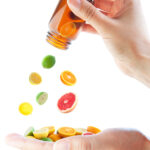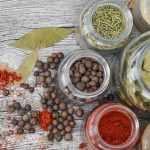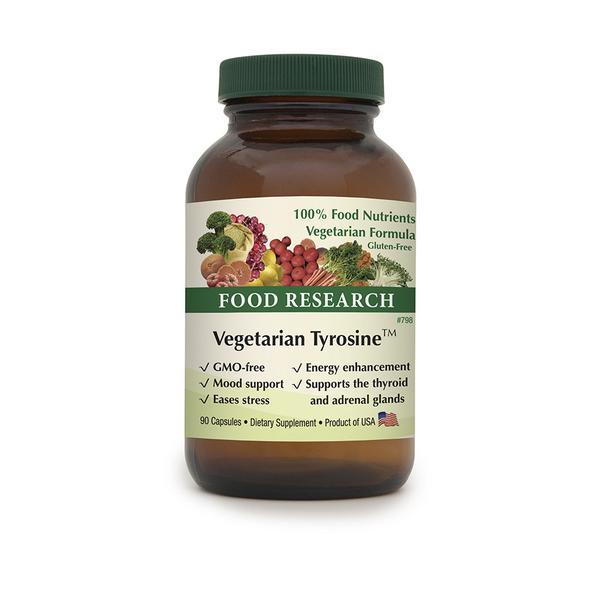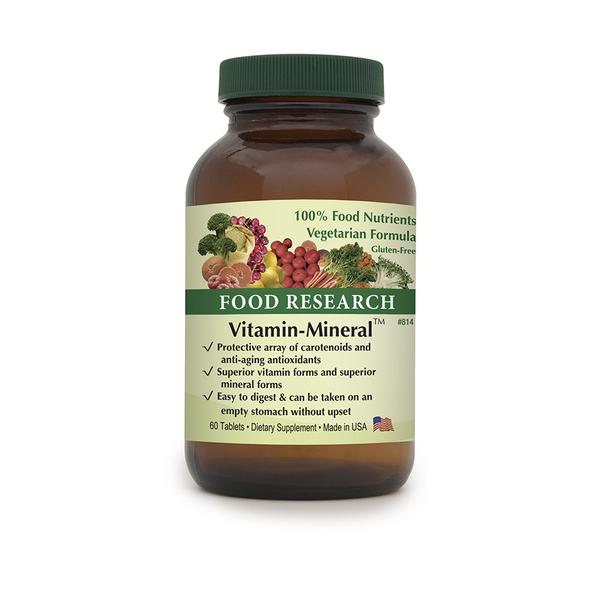Dr. Anthony Fauci, who is the director of the National Institute of Allergy and Infectious Diseases and a key member of the Coronavirus Task Force, was interviewed:
September 13, 2020
As the world waits for a coronavirus vaccine, many Americans are taking whatever they can to “boost their immunity” against COVID-19. That’s why two actresses, when they had a chance to interview Dr. Anthony Fauci, the director of the National Institute of Allergy and Infectious Diseases and key member of the Coronavirus Task Force, asked him about just that.
Fauci Takes These Two Vitamins Himself
In an interview that was fairly kid-focused, Jennifer Garner asked Fauci, “Now, should moms be doing something just to boost our kids’ immune system? You know, do you need more vitamin C? Do they need more spinach? Is there anything we should be doing? Elderberry?”
Said Fauci: “The answer is to the dismay of many: No. So if a child is deficient…there are two vitamins that you should consider. For example, if you are deficient in vitamin D, that does have an impact on your susceptibility to infection. So I would not mind recommending, and I do it myself taking vitamin D supplements. The other vitamin that people take is vitamin C because it’s a good antioxidant. So if people want to take a gram or two at the most vitamin C, that would be fine. So vitamin C and vitamin D. Okay. Any of the other concoctions and herbs I would not do.” https://www.yahoo.com/lifestyle/dr-fauci-takes-two-vitamins-105900209.html
Let’s go over some of this.
First, yes, vitamin D can be quite helpful. Notice the following: Vitamin D deficiency increases a person’s risk for catching COVID-19 by 77% compared to those with sufficient levels of the nutrient, a study published Thursday by JAMA Network Open found. https://www.upi.com/Health_News/2020/09/03/Vitamin-D-deficiency-raises-COVID-19-infection-risk-by-77-study-finds/7001599139929/
The human body, with the aid of sunlight, converts cholesterol into vitamin D. And vitamin D can help the immune system. It also looks to reduce the severity of COVID-19 symptoms in some (see COVID-19: Ghana pushing exercise, Germany reports about Vitamin D). Isolated vitamin D, such as what Dr. Fauci presumably takes, is not as natural as food source vitamin D, but normally does assist in elevating vitamin D levels.
Second, yes, vitamin C can be helpful. But, Dr. Fauci is not an expert on nutrition or natural interventions for COVID-19. Synthetic vitamin C, normally listed as ascorbic acid, is NOT “a good antioxidant” for human beings as Dr. Fauci claimed. At best, ascorbic acid is a “weak antioxidant” in vivo (in the human body). Here is some information from my book The Truth About Vitamins and Minerals in Supplements:
Vitamin C
Ascorbic acid (AA) is not a synonym for vitamin C, though it certainly has vitamin C (antiscorbutic) properties; dehydroascorbic acid, DHAA, is the other biologically active form [1-3]. As will be shown later in this chapter, this does not mean that isolated ascorbic acid has the same beneficial properties that vitamin C has in food. Foods generally contain two biologically active forms of vitamin C [1,4,5], yet most synthetic vitamin C only contains isolated ascorbic acid [6,7]. In foods that contain ascorbate, it never exists as an isolate [1,4]. In foods, vitamin C is complexed with carbohydrates, proteins, lipids, and other components of food [1,4].
Ascorbate complexed in food is not the same as isolated ascorbic acid [8]. Under an electron microscope ascorbic acid appears to be crystalline, whereas vitamin C complexed in food appears rounded [9]. The body does not retain isolated ascorbic acid as well as vitamin C from foods [10-12]; this is probably why many who advocate isolated ascorbic acid tell people they need to take it throughout the day.
It is of interest to note that even Albert Szent Gyorgyi, while accepting the Nobel prize for isolating ascorbic acid, told scientists that isolated ascorbic acid did not work by itself, that vitamin C worked best with the factors that are naturally found with it in foods such as citrus. It has been correctly written that “it was not honest to use the term ‘vitamin C’ for ascorbic acid. That term should be reserved for the vitamin C COMPLEX.” “As recently as 1993, to differentiate articles sold as drugs from nutritional supplements, the US Pharmacopoeia referred to ‘ascorbic acid’ as a recognized drug name and ‘vitamin C’ as a recognized food name” [11]. That is a good way even today to think of the difference: Food vitamin C is a real food, while regular ‘natural’ ascorbic acid is pharmaceutically manufactured. JUST BECAUSE A LABEL CLAIMS THAT IT IS NATURAL, IT DOES NOT MEAN THAT IT DOES NOT CONTAIN AN UNNATURAL SUBSTANCE SUCH AS ISOLATED ASCORBIC ACID, WHICH IS ALWAYS SYNTHETICALLY PRODUCED.
In a limited sense, isolated ascorbic acid is natural. It originates from corn, but by the time it is processed and sold it bears no resemblance to any natural food [11]. Specifically, non-food, ‘natural’ ascorbic acid is made by fermenting corn sugar into sorbitol, then hydrogenating it until it turns into sorbose. Then acetone is added to break the molecular bonds, which creates isolated, crystalline, ascorbic acid. Ascorbic acid does not contain both forms of vitamin C nor bioflavonoids, thus is too incomplete to properly be called vitamin C. Isolated ascorbic acid is not considered to be natural vitamin C and should not be called vitamin C.
Also, the various patented ‘vitamin C’ compounds that are touted as less acidic than ascorbic acid also are not food. It is not possible to get a US patent on naturally occurring vitamins as found in food. For the record, it should be noted that Food vitamin C (as found in tablets) is about ten times less acidic than ascorbic acid.
Bioavailability of Vitamin C
Jacob has written, “The bioavailability of vitamin C in food and ‘natural form’ supplements is not significantly different from that of pure synthetic AA” [4]. For proof he cites two papers. The first citation is a paper by Mangels (et al) [7]. It is a study that concludes since serum ascorbic acid levels were at similar levels after various vitamin C containing foods and synthetic ascorbic acid were consumed, that the bioavailability is similar. The study itself appears to be an excellent one, but its conclusions ignore the fact that it may be possible that DHAA or other food constituents associated with natural vitamin C may have positive effects other than raising serum ascorbate levels. The second citation is a study done by Johnson and Luo [13]. This particular study should not have been cited as it never compared vitamin C as complexed in food versus synthetic ascorbic acid. It is an excellent paper which compared synthetic ascorbic acid to Ester-C (a commercial blend of ascorbic acid and select metabolites) and to synthetic ascorbic acid mixed with some bioflavonoids. The data in this study showed that absorption was minimally better with the product with added bioflavonoids, though the authors concluded the differences were not significant [13].
Also Levine (et al) has written, that “There are no data for true bioavailability of vitamin C administered with foods or with compounds in foods,” yet the same chapter also states, “Diets with high vitamin C content from fruits and vegetables are associated with lower cancer risk, especially for cancers of the oral cavity, esophagus, stomach, colon, and lung. In contrast, consumption of vitamin C as a supplement in experimental trials had no effect on development of colorectal adenoma and stomach cancer” [2]. In other words, whether it is vitamin C or other components of food, foods which are naturally high in vitamin C are better than isolated ascorbic acid.
Although “the bioavailability of vitamin C in humans and… our current understanding of that process and factors that influence it are incomplete” [14], it appears that slower disintegration times improve the bioavailability of vitamin C [15], and that is what foods have.
Other reports seem to give a reasonable hint about the comparison of vitamin C in foods compared to isolated ascorbic acid [11,16-23]; they suggest that foods are superior.
A human study found that a food complex containing 500mg of vitamin C was 2.16 times more effective in reducing sorbitol in diabetics than was isolated ascorbic acid [24]. One study by Vinson and Howard showed an average decrease of 46.8% in protein glycation after four weeks using 1000mg per day of vitamin C complexed in food [25], while a study by Davie, Gould, and Yudkin only had a 33% reduction in three months using 1000mg of isolated ascorbic acid per day [22]. An animal study found that after one month of feeding, vitamin C complexed with food (it was not a simple mixture) induced a significant reduction of 77%, 66%, and 40% in plasma total cholesterol, LDL + VLDL, and triglycerides respectively and that USP ascorbic acid or bioflavonoids alone were ineffective (though isolated USP ascorbic acid did raise HDL); this same study also found that the natural food complex vitamin C strongly inhibited atherosclerosis [26]. Another animal study found that vitamin C complexed in food was 41% more effective than isolated ascorbic acid in decreasing galactitol when cataracts were present [27]. These studies suggest that there may be multiple benefits associated with natural vitamin C that are not always apparent when only serum ascorbic acid levels are measured. Some studies have found much more vitamin C in the blood after 4 hours after ingesting a food vs. a non-food form [e.g. 28-29]. That could be almost infinitely better, depending on what is going on in the body at that time or have basically no benefit at all. It would seem that the body having sufficient vitamin C to deal with free radicals, support the immune system, etc. than to possibly have less than an optimal amount is not the best.
Antioxidant Properties
Although ascorbic acid is a powerful antioxidant in vitro, it does not have proven significant antioxidant effects in vivo. How substances react in biological systems and in tests tubes is not always the same. “Despite epidemiological and some experimental studies, it has not been possible to show conclusively that higher than anti-scorbutic intake of” ascorbic acid “has antioxidant clinical benefit” as ascorbic acid “may be a weak antioxidant in vivo, or its antioxidant actions may have no physiological role, or its role may be small. The oxidative hypothesis is unproven” [30]. On the other hand, high vitamin C containing foods do have proven in vitro and in vivo antioxidant effects [31].
De-emphasizing vitamin C containing foods by attempting to consume higher quantities of isolated ascorbic acid simply will not have the effects on plasma vitamin C levels, ORP, ORAC, or other health aspects that many consumers of isolated ascorbic acid hope it will.
Oxidative Redux Potential
An in vitro study (see Table 1) found that Food vitamin C tablets have negative ORP (oxidative reductive potential), yet the Merck Index shows that so-called ‘natural’ ascorbic acid has positive ORP. Negative ORP is much better as it helps ‘clean up’ oxidative damage whereas items with positive ORP do not. Since it takes negative ORP to clean up oxidative damage, it is logical that only vitamin C in food would be chosen by any interested in dealing with the consequences of free radical damage.
Table 1
USP Ascorbic Acid vs. Food Vitamin C
Nutrient pH Oxidative Reduction Potential
USP ascorbic acid 3.3 129 mV
Buffered USP ascorbic acid 4.8 27 mV
Food vitamin C 4.8 -78 mV
While this study was done in vitro, since Food vitamin C has proven antioxidant effects in vivo [30] and isolated ascorbic acid does not [23], it seems reasonable to conclude that food vitamin C both prevents oxidative damage and ‘cleans up’ damage much better than isolated ascorbic acid.
ORAC
ORAC is an abbreviation for oxygen radical absorbance capacity and is considered one of the best current ways to determine the free-radical fighting abilities of foods/nutrients.
One study found that a specially-grown orange C complex was proven to have 492 micro moles per gram T.E. (Trolox equivalents) of hydrophilic ORAC [19]—ORAC is essentially a measurement of the ability to quench free radicals (antioxidant ability)—while blueberries (one of the highest ORAC sources [20]) only had 195 micro moles per gram T.E. [19]—thus specially-grown orange C complex has 2.52 times the ORAC ability of blueberries. Vitamin C containing food has over 15.6 times the ORAC of isolated ascorbic acid [20].
Bioflavonoids
Bioflavonoids are normally yellowish substances that are derivatives of flavones. Some have called them vitamin H. They help to maintain capillary walls, which helps to prevent the likelihood of hemorrhaging and bruising. They are also believed to enhance the effectiveness of vitamin C. And while some ascorbic acid formulas contain some bioflavonoids, they normally do not have the full complement of them that nature provides. Citrus fruits, for example, contain a variety of truly organic bioflavonoids including flavanone glycosides, naringin, neorioctrin, neohesperidin, hesperiden, flavone glycosides, rhoifolin, luteolin, neodiosnin, flavon aglycones, tetra-o-methylisoscutellaren, sinensetin, isosinensetin, tangeretin, nobiletin, 5-0-desmethyl-nobiletin.







